
After launching a limited edition athleisure clothing line and publishing a sexy coffee table book inspired by the mass shooting in Orlando, Grindr says it’s ready to make the leap from “hookup helper” to “lifestyle brand.”
“The next ‘problem’ I want to solve with Grindr is: ‘What do I do tonight?’ That’s what we’re optimizing for Grindr today,” CEO Joel Simkhai, who launched the app in 2009, tells Broadly in a truly all-over-the-place new interview. ” I want you to get out of your house and do things. That could be hooking up, or not.”
Related: Grindr publishes artsy, sexy coffee table book in memory of… Orlando?
Ultimately, Simkhai says, he wants Grindr to become “more holistic” and “help unlock your world around you.”
How about we take this to the next level?
Our newsletter is like a refreshing cocktail (or mocktail) of LGBTQ+ entertainment and pop culture, served up with a side of eye-candy.
“No one’s doing this [with a] specific focus on your needs as a gay man,” he asserts.
The hookup app, which is valued at around $155 million, attracts over two million daily users, who spend an average of 54 minutes on the site. Execs think this means it’s ripe to “become the preeminent global gay lifestyle brand.”
“As we talk social networks—the Snapchats, the Facebooks, the Instagrams—they’re not really bringing people together,” Simkhai says. “We’re one of the unique apps that actually brings you to meet someone.”
Of course, it’s pretty easy to bring people together when sex is the motivating factor. The question is: Can the app still do that without the promise of an orgasm?
Related: Coming Soon: An HIV Filter On Grindr???
Oh, but it doesn’t stop there. The app has even loftier goals, like tackling homophobia and transphobia the world over and helping LGBTQ refugees in war torn countries get the help they need.
“It’s illegal to be gay in over 70 countries in this world,” Simkhai continues. “We’re in a unique position where we can take technology and our mass audience and bring them together to advance gay rights.”
The app has already being laying the groundwork for this with it’s Grindr for Equality department, which is overseen by Jack Harrison-Quintana.
“People are moving out of Syria in droves, and in most refugee systems these people get introduced into, no one is tracking if people are LGBT,” Harrison-Quintana says. “As a result, they don’t get access to what they need. If you’re a trans woman leaving Syria and you need to get hormones in Lebanon—what do you do?”
Grindr helps these refugees by sending them targeted in-app advertisements altering them as to where they can find LGBTQ-specific refugee services.
Related: Why Do So Many Guys On Grindr Act Like Complete Idiots?
Another item on the app’s agenda is raising awareness to HIV/AIDS prevention and treatment. One thing it’s not so interested in doing, however, is tackling the whole “no fats, no femmes, no Asians, no Blacks” culture it has helped create among gay men.
“It would be great to foster a kinder community, potentially,” Simkhai says, “but we’re a platform where we want people to meet. That’s not my job, to solve societal problems.”
He continues: “Dealing with life-and-death issues and access to healthcare—that’s where we’re interested in the social side, and less so, ‘Are people being nice enough?’ To say, ‘I’m only into black guys’—is that a bad thing? I think we should allow you to say that, because that’s your preference.”
“My goal, I don’t think, is to have people be nicer in this world,” he says.
After all, if people, in general, were “nicer,” there wouldn’t be any need for all those targeted in-app advertisements aimed at refugees that have helped make Grindr the $155 million global company it is today.
Related: Too Many White Guys On Grindr & Too Many Are Racist, Blogger Laments
h/t: Broadly



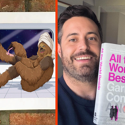


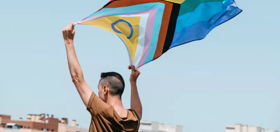

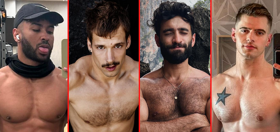





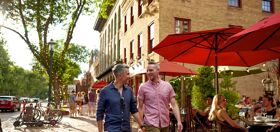


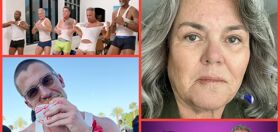


Black Pegasus
Lifestyle Brand? lol what a joke. Grindr is one of the worst gay social apps out there yet online media continue as if they are the best. Sure, their number us users makes them king but that’s because they arrived at the party first. Ask platforms like Yahoo and Myspace what the value of being first means in todays world.
Scruff and Jackd offers users more pratical options without the puritan censorship.
billjones
Stop AIDS? Don’t you mean spread AIDS?
Danny279
Grindr wants to stop AIDS! In other news, Exxon wants to stop global warming, RJ Reynolds wants to stop lung cancer and Trump wants to stop abuse on Twitter.
ChrisK
@billjones: Not once in history has anyone ever spread Aids.
Baba Booey Fafa Fooey
Stop AIDS and help refugees. Both kill gays, though.
Brian
Go away,Joel Simkhai. I avoid Grindr like the plague. Grindr is for nitwits and morons.
MarionPaige
It’s sad that every press piece that attempts to pimp how succesfull GRINDR is merely succeeds in showing how little money there is in “GAY”
1. the brand Grindr has 2 million active users world wide when Youtubers have more subscribers. Pewdiepie has 50 million subscribers and the fastest selling app. by extension,
2. Pewdiepie and Kim Khardasian are bigger than the biggest “Gay” Brand. The only way I see you can get $155 million in worth from only 2 million users is if all of those users are spending millions per year on Grindr product.
3. The biggest blow to the marketing of Gay is that Grindr is looking to advertising for growth rather than sales to Gay consumers, it brings home my theory that there is probably enough money thrown down the toilet on “Gay Advertising” to just give everyone Gay $60,000 per year. for example,
Consider Grindr’s alleged $155 million value when there are less than 1 million married same-sex couple.
Heywood Jablowme
“Tackling homophobia and transphobia the world over” = easy!
Solving refugee crises everywhere = easy!
Even HIV prevention = easy! (Yeah right.)
But urging gay men on Grindr to be “nicer” to each other? Oh well, let’s not attempt the impossible. lol
NateOcean
I’m all for helping refugees; anything to get my dick sucked.